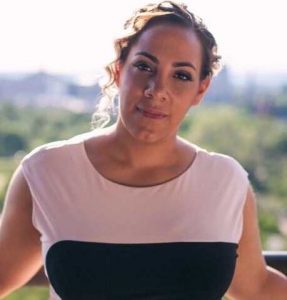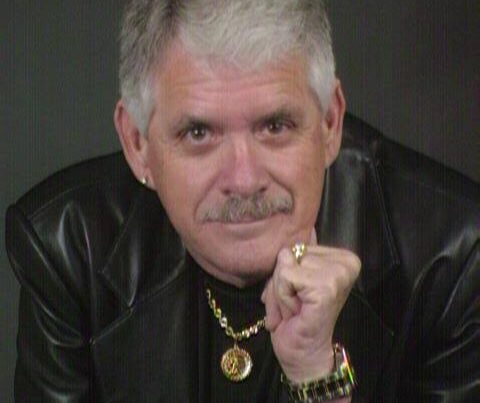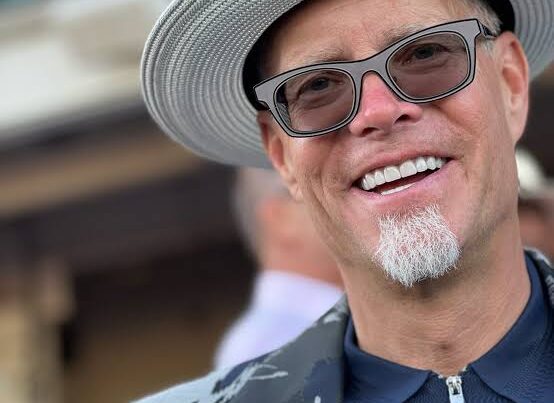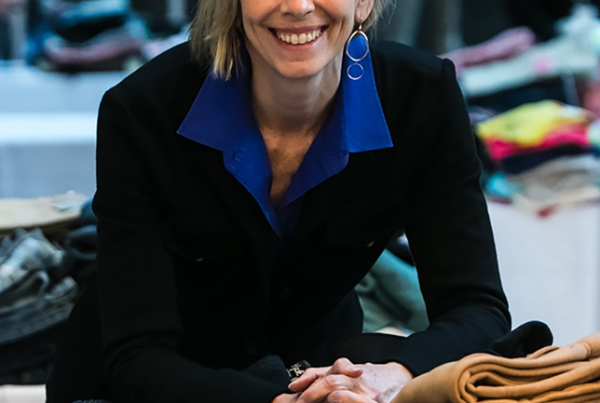Podcast: Play in new window | Download
Subscribe: RSS
How do you incorporate diversity and inclusion into your business strategy while improving your levels of impact?

Trudi Lebron
Trudi Lebron is a compassionate yet no-nonsense rule breaker who has been carving out her own path for the last 23 years. By the time Trudi was 16, she had two children and had dropped out of high school. All the odds were against her.
Today, Trudi is a sought-after coach for entrepreneurs, nonprofits, and corporate institutions helping them create social impact initiatives, and train leaders to lead with a lens for equity, diversity, inclusion, and impact. Her experience of being a bi-racial teen mom on welfare who worked her way up in the non-profit sector while building her own business gives her a unique perspective on using our businesses for social good.
Trudi holds a BA in Theatre, a Master’s in Psychology with a specialization in strategic planning for social change, and is currently a PhD candidate in the Social Psychology. She is also the co-host of the top-rated podcast That’s Not How That Works; a show about race, diversity, equity, and inclusion in the coaching industry. She was also recognized as one of Connecticut’s 40 under 40 in business in 2016 by the Hartford Business Journal.
What We Discuss With Trudi Lebron
- How to align your business values with the impact you want to create
- The importance of diversity in making better business decisions
- How equity, diversity and inclusion impacts your revenue and client satisfaction
- Where the coaching industry has lagged behind in embracing equity, diversity and inclusion
- The three core levels of impact and what they mean for you as an entrepreneur
Episode Transcript Highlights
What is the transformation that you create? (2:30)
There are two main buckets that my work falls into. One is with entrepreneurs who come out of the activist social justice non-profit world who are looking to build their business from the beginning with a strong lens around justice, values and impact.
They don’t want to follow traditional sales funnel training that so many of us have been through. They’re looking for a way to build a business that allows them to generate the revenue that they need, and also create change and serve people who may not have the financial means or the time to invest in high end coaching programs.
The other bucket is working with people who have established brands and businesses who are at a point where they need to do a little bit of work around creating more diversity in their institution; creating more of a culture of inclusion and justice.
Some people are really interested in creating initiatives where they’re giving back to particular initiatives or building what I call equity initiatives, like pathways into the business that maybe aren’t as financially accessible for some people. Those businesses tend to have been around for a little bit longer. They’re generating multiple six and seven figures of revenue and the leadership is just really looking to realign their brand to the values that they have that maybe aren’t currently being amplified in their business day to day.
So where do people start with this idea of doing business that does good? (5:07)
Sometimes it’s the CEO who’s really calling all the shots and sometimes there’s a leadership team who is carrying out a vision, or a board of directors. In some cases, if it’s a nonprofit institution or corporation that has an advisory board that’s heavily involved, it’s some deep work around just getting real with what are you actually trying to do. When your bottom line is a financial bottom line, you make decisions that generate more revenue. You’re going to decrease expenses so that you have bigger profit margins.
In an impact driven business, you may have more than one bottom line. We often talk about a double or triple bottom line.
I certainly have aggressive financial goals that I want to hit, but I also have really strong social impact commitments. So for these companies that I work with, we’re looking at the other priorities that are not about finances; that you would consider you failed upon if you did not achieve those.
When you put those bottom lines up against each other, you make different decisions. Sometimes it means that you spend a little more and sometimes it means investing a little more. And sometimes it means that you’re investing time or hiring people or doing different things. Maybe you don’t end the year with as much profit as you might have last year, but your social bottom line makes up for so much of that difference because the culture of your workplace is better, your clients are happier, and you’re able to look back and say, wow, we’ve had all this transformation.
It’s worth the investment in time and energy and money to be conducting business in a different way. You start with these reality checks around what we’re doing really and what are we saying we’re doing that maybe we’re not carrying out upon. Let’s just get real about what is actually happening here. Let’s hear from our community and let’s hear from our employees and our teams about what they think, where they think we’re aligned and where they think we’re misaligned.
That’s the starting point and because that could be so sensitive and hard to hear, people don’t want to do it. That’s what stops a lot of people. They just want to know where to write the check to what donation can they make. Not that you shouldn’t do that, but when we look at impact and the potential for impact, it’s actually a very flat, shallow way to create change.
How do you work through this with teams? (9:22)
Spending time with executive teams, doing coaching and getting them to get comfortable being uncomfortable; holding the space to be able to ask them tough questions and talk about what’s hard. I call them inquiries. We do focus groups and surveys with team members to say, based on how you spend your time as a team member, what do you think is the most important thing?
You’d be surprised by how many different answers to that question you get and what you want is that everybody’s on the same page about what’s most important to the organization. But based on how people spend their time, how they’re supervised, and the different pressures and how they’re evaluated on their own performance, you find that people have very different things to say about what’s most important.
One of the things that I hear a lot is that people will say that it’s not about sales. It’s not about the most sales, but it’s about getting the right people into the program. But then you talk to the teams and the sales people and they’re like, yeah, it’s not really true. It’s just about like how many people I can get in. Yeah, it’s a quota. That’s what it is.
The thing is, it doesn’t have to be either/or, it can be both. It can be that you have an aggressive quota and that it’s about getting the right people, but it’s about how you train, manage and supervise against that and how you monitor it. Those systems tend to be a little less sophisticated than our sales funnels, unfortunately.
When we talk about diversity and inclusion and measuring impact, how do you do that? (11:26)
It depends on the goals of the institution; what kind of transformation they’re out to create. That’s important.
I also ask people to consider things like what their goals are for client experience, retention of clients, and goals for culture. Especially for people that have bigger teams. Do you have goals around equity and inclusion and diversity?
When they don’t have an explicit plan around that, what we tend to replicate is just that we hire a bunch of people who look like us and that’s whoever it is. That tends to be what happens unless you have a plan to be intentionally recruiting for diversity and hiring – you’re going to hire the best person for the job and you’re going to pick them from a very diverse pool of candidates who are all amazingly qualified to do the work.
That’s actually a really important piece because I think that’s where there’s pushback to the idea of diversity. We were like, well, I need to get the best candidate. Like they have to choose between one or the other and not realizing that they’re actually sacrificing and/or preventing themselves from actually having the best talent. (12:57)
Yeah. Not only are they preventing themselves from having the best talent, but they’re preventing themselves from having the best program because there’s so much data that we quantitatively know that client outcomes are actually better. The quality of your program and the experience that you’re able to provide is actually better when you have a diverse team.
Talk about why your program is better when you have a diverse team. (13:21)
It’s a lot of different things, but when you have a diverse team, you have a number of people who are bringing different ways to solve problems; who can relate to different clients in different ways.
When you’re problem solving, you have more diversity of life experience to pull from. If everyone in the room has gone to similar colleges and have all been through the same coach training programs and have worked for all of the same people that we all know, when you’re in a room trying to solve a problem, you just all have the same ideas and you’re just confirming what each other thinks.
And so when you disrupt that with intentionally hiring people from different sectors or with different racial backgrounds, or from different countries or with different language skills, now when you solve a problem, you have way more options to pull from.
So that enhances the quality of your culture and your programs. However, that’s only true if you have done the work to be able to contain and manage, and provide safe space. So you’re accounting for things like bias and people understand that they can’t be micro-aggressing against each other and that there are protocols and expectations for those kinds of things. This is one of those things that it takes a little more work, but the return on investment is far greater than what you will put forth.
Right. If you put a whole bunch of people in a room, you can create tremendous synergy and creativity and innovation, or you can create tremendous chaos and competition. Depending on the context which you have created – the safe space or not that you have created.
So you started out with two kids and living on welfare. You’re entrepreneurial, so you were doing your business. How did you go from that to this? (15:29)
The beginning of it is pretty basic. I was in college and really poor. I had two kids by the time I was 16. I dropped out of high school and I homeschooled my way through a GED curriculum and got my GED and then started college.
There were a bunch of hard things about trying to do that, and I had certain privileges. I was very smart. I didn’t have any learning disabilities. I was never homeless. My parents were separated, but they were both employed and we were stable. So I had the ability to do some things that maybe a lot of other people who had multiple children and also were 16 wouldn’t have been able to navigate as easily.
So I went to college, and every semester was a big question mark about whether or not I’d be able to make it or not. I fought through that and worked in nonprofits, working with young people.
My degree was in theater. My father was like, what in the world are you going to do? What is happening? But when you’re a theater major, you have to teach. Any artist knows you’re a teaching artist. And so teaching artists is like the best entrepreneurial skills you can get because you’re traveling all over the place, you’re teaching any gig you can get. You’re used to getting 1099’s in the mail. You just learn those skills.
So I was 19 years old in business, just teaching the skills that I had. Theater also happens to be a great way to be able to get on stages and talk to people. So there was a lot of stuff that I was gaining from that.
Fast forward. I got my degree, got a full time job, got a master’s degree in psychology and because I had that hustler spirit, I was able to just take anything that I knew that I could teach other people and just go out and book workshops and book trainings.
I got a pretty good rep reputation for being an expert in youth development and what it takes to work with children or teenagers who have high risk lives – getting them through high school and getting them into college.
I was working full time, but I was also in business almost full time consulting and doing workshops. And then I took my first coaching program. Then finally I was in a place where I realized, I can’t keep doing both. My business either has to work or I have to go and become the executive director of a nonprofit somewhere.
At this time I was studying for my PhD. So I got into the coaching industry. I had also got a coaching certification along the way, but I get into my first business coaching program and although it was great in terms of helping me learn how to package my business and get a little more comfortable with selling and all of these things, I learned really quick that the field was not diverse and that it was a problem. No one in the industry at that time, this is a couple of years back, was talking about equity, diversity and inclusion and this is a skill that I had been doing now in my professional career for about 10 years.
I was talking about inequities in schools and helping people figure this stuff out in their organizations and school systems and I noticed that the coaching industry was just really, really behind every other sector. They’re all looking at, how do we bring more diversity into our pipeline? How do we make these places more equitable? How do we make sure we’re paying people equitably? Because the coaching industry is a lot of entrepreneurs, that’s not happening. It’s just not happening. And so I started writing about it and I started talking about it and I was at the right time.
I launched a course called, at the time it was just ‘diversity and equity for coaches’. It was a seven week course. And I was lucky enough that a couple of people who had some pretty significant influence who took the course and started inviting me to speak and started introducing me to people.
It was also at the time when people were talking about it more. So I had the right combination of actual experience, professional experience on the ground, timing, and also that entrepreneurial spirit – I was just ready to go.
So where’s the next mountain for you to climb? (21:28)
Right now we’re focused on building our mastermind, which is more on the entrepreneurial side; people who are working full time in their business, but are still trying to figure out how to stabilize their revenue and do it in a way that they’re not compromising their values or their impact goals. So we’re growing that while we’re working with our corporate clients. And so now it’s just a matter of scale.
We’re not really trying to change much. We’re launching a podcast, but that’s pretty simple. I’ve co-hosted a podcast now for two years called That’s Not How It Works. So we’re doing another podcast and now it’s about scale and just getting the message out.
I’ve hired a team which is amazing. We have space here in Hartford, Connecticut where I live and we’re thinking about ways to activate that space. I believe very much in a local practice. I don’t want to just be a coach teaching coaches and I want to be on the ground with people getting my hands dirty. So we have programs that happen in person.
We’re focused on scale until the next thing unfolds. And so that’s where there are a couple of things that we’re thinking about, but I’m getting ready to go on a spiritual retreat to Bali my first time. I feel it’s like a coaching thing to do. I’m doing a lot of self-care and thinking really intentionally about what that next body of work is.
Levels of Impact
So for now we’re just trying to be in service and reach as many people as possible. Our impact is really secondary. I teach a model of impact called the five dimensions of impact and I won’t go into all of them, we can share links to that stuff if you want. But the most important thing is that the three top tiers of impact are: reflected impact, primary impact and secondary impact.
The first level of impact is just about the outcome of your effort on yourself; your revenue and your profit, those kinds of metrics. Primary impact is the experience that your clients get directly. And then secondary impact is the experience of the people who your clients are serving, what’s their experience.
My work is very much concerned about that secondary level of impact. That’s not the case for a lot of people, but when I’m working with corporations and leaders, I’m very much concerned with building their capacity so that their clients have a better experience. So that scale piece is really important because if I can do a good job at working with leaders and entrepreneurs, that secondary level of impact, they’re working with thousands and thousands of people and I’m like super tuned into that.
So I’m much more concerned about scale than I am about creating new programs and selling a bunch of eBooks. I really want to get good at what we do and spread it around and that is the impact.
The movement makers who are listening and looking to grow their movement, what would you tell them as in terms of next steps for them? (25:52)
Yeah. So getting clear on again what your goals are and what you’re setting out to do is really step one. Then two, is how do you want to measure that? How do you know that you’ve gotten there? I think that’s an easy step to skip – how do you want to measure the success of your work? And what are different ways that you can measure success of your work?
At what points along the journey when you’re working with clients, can you check in with them? Can you check in with them a year after they’re done?
Impact isn’t just about how many people you’re working with in a moment. It’s also the duration, and how long that transformation lasts. We’ve all had the experience of being at a motivational event and we leave and we’re all, you know, that was so impactful. And a couple of weeks later we forget that we were there. That’s impact, but it’s not lasting impact.
Having these kinds of conversations about what kind of impact do we need to be making, how do we get there, how do we measure it, and how do we get good at it and make sure that we’re doing it in a way that is reaching a diverse audience, that we’re serving people well and that we’re accessible to the people who need us – that’s a movement in my opinion.
That is also what conscious capitalism is about, right? That’s about how do we do this in ways that are socially responsible.
Measuring the impact can be a challenge because like you said, it’s what’s the impact? I’m working on a project right now and started a private mastermind on the topic of generosity. So how do you measure generosity? What is your generosity strategy? Okay, I want to be more generous. What does that actually look like? We’re in this right now in terms of, how do we measure and is it different maybe for different people? Can we agree on this? (28:26)
I nerd out over that stuff because you know, my PhD work was in social psychology. So when I’m working with clients and they say things like generosity, okay, well what does that mean? What are the indicators of generosity? Because generosity on its own, you really can’t just measure that. It has to come down to behaviors and attitudinal features.
But you can have that level of specificity with all your programs, right? You say you want people to be more motivated and inspired. Well what does that mean really? We can actually boil it down to behavioral things and changes in people’s attitudes and you can measure it. There’s so much potential there and the real potential is when you measure it and then use that data to improve your program.
When you do that, your work as an entrepreneur, as a movement, that’s really when you elevate the experience and it’s something that surpasses any kind of sales trend. It’s not about what’s happening in the moment, but it can supersede all of the trends and you really have something that can make a difference.
You mentioned that you have a couple of courses, what would you recommend for our listeners? (30:11)
You can check out the website, but follow me on social media at Trudi Lebron on Instagram and Facebook and book a call. Let me know what you’re up to and what you’re hoping to fix and then we can run through what the options are. For some people that looks like working together closely for a couple of months. For some people it’s a one day thing and we can get in there and rearrange some things and make some decisions and then you can go off and implement.
For other people they want closer proximity. So there are a couple of ways that I work with people – and one of the best ways is to get on the phone and figure out what’s best. My own commitment is to really understand and not just sell things to people, but understand what’s going on. To make sure that I know that I can help and then help you in the right way and not just throw you into a program.
Connect With Trudi Lebron
Did You Enjoy The Podcast?
If you like this episode let us know! Reviews for the podcast on iTunes are greatly appreciated. This helps us reach more entrepreneurs seeking to make a positive impact in the world. If you received value from this episode, it would mean so much if you could take a moment and leave your 5-star rating and review. You can do that by visiting here. Thank you! Together we can make a difference!
Additional Episodes on Diversity and Inclusion
- 289: Sarika Bhakta: Bringing The Diversity Pendulum Back Into Balance
- 246: Andie Kramer & Al Harris: Breaking Through Bias
- 232: Amy C. Waninger: Network Beyond Bias
- 231: Rich Donovan: Unleash Different – Achieving Business Success Through Disability
- 194: Julie Kratz: How Male Allies Can Support Women For Gender Equality In The Workplace
- 178: Michael O’Brien: Shift – Creating Better Tomorrows










